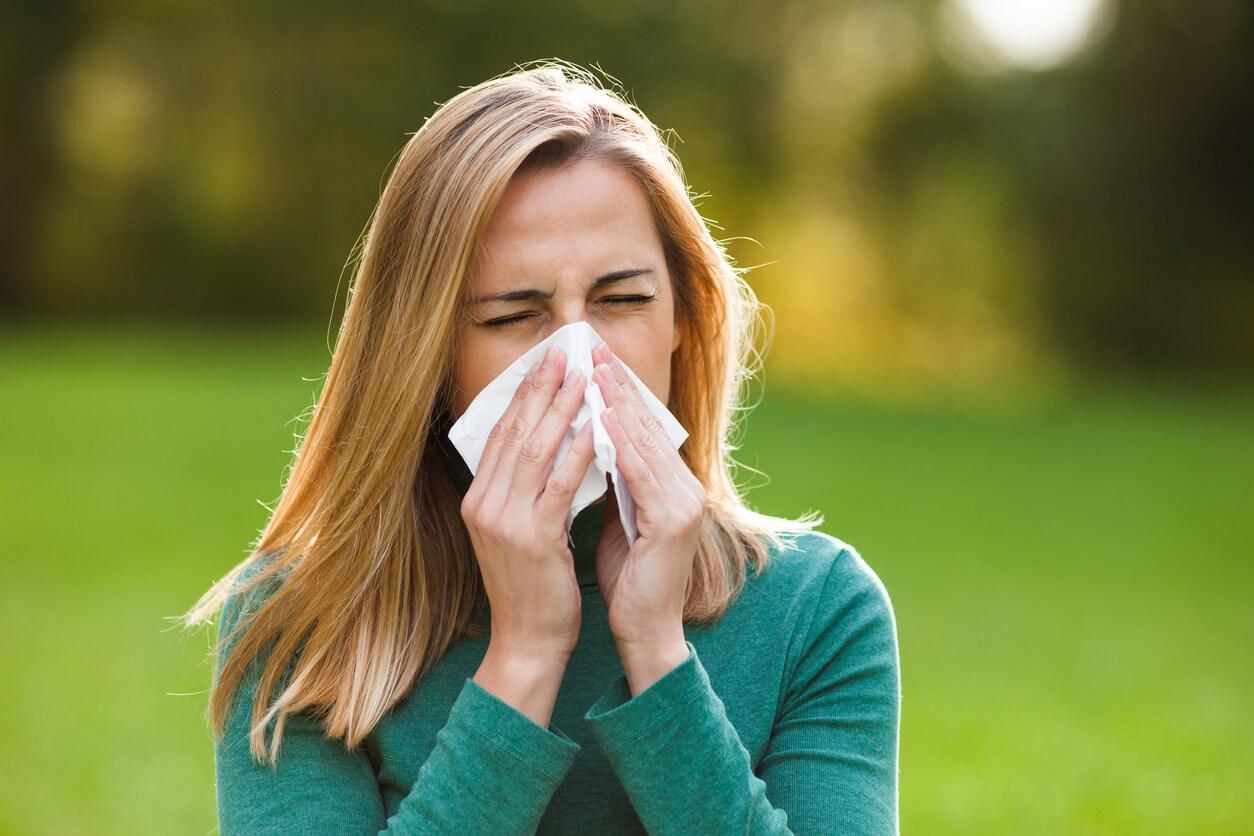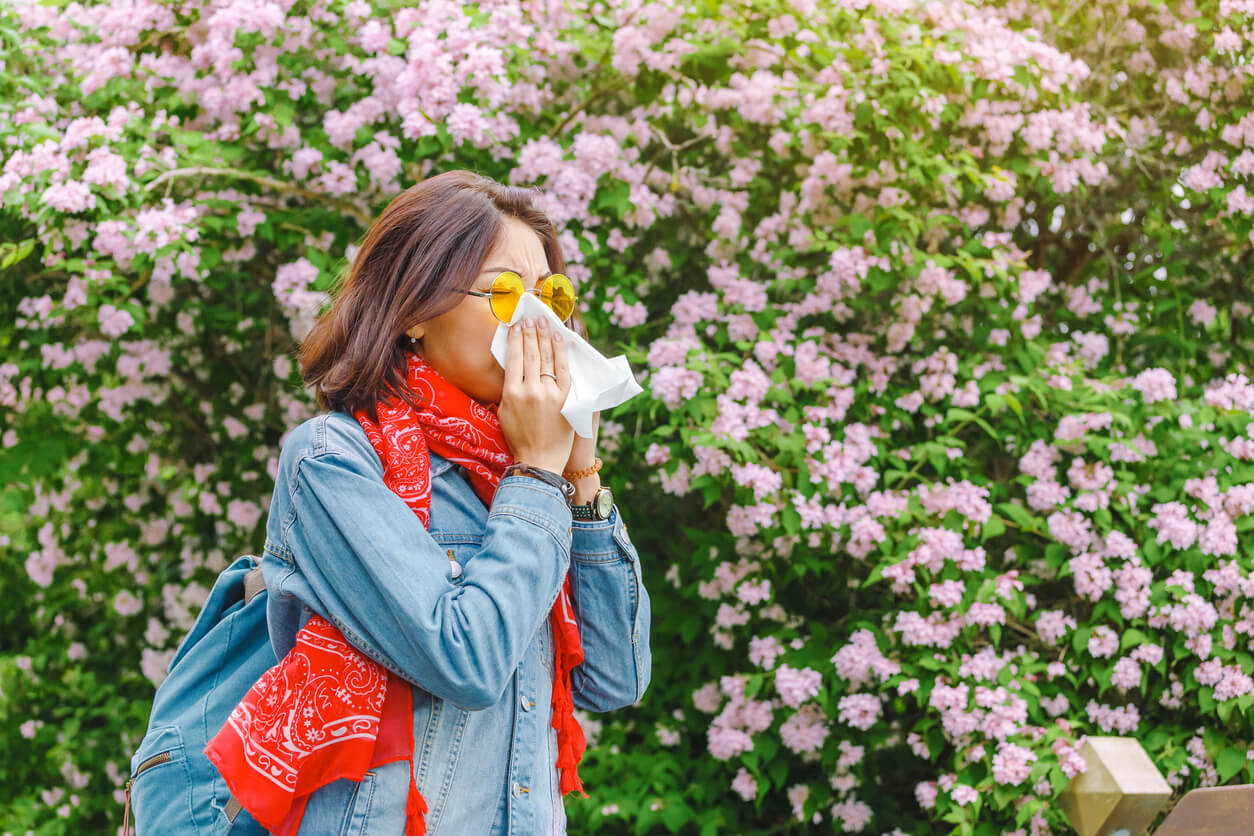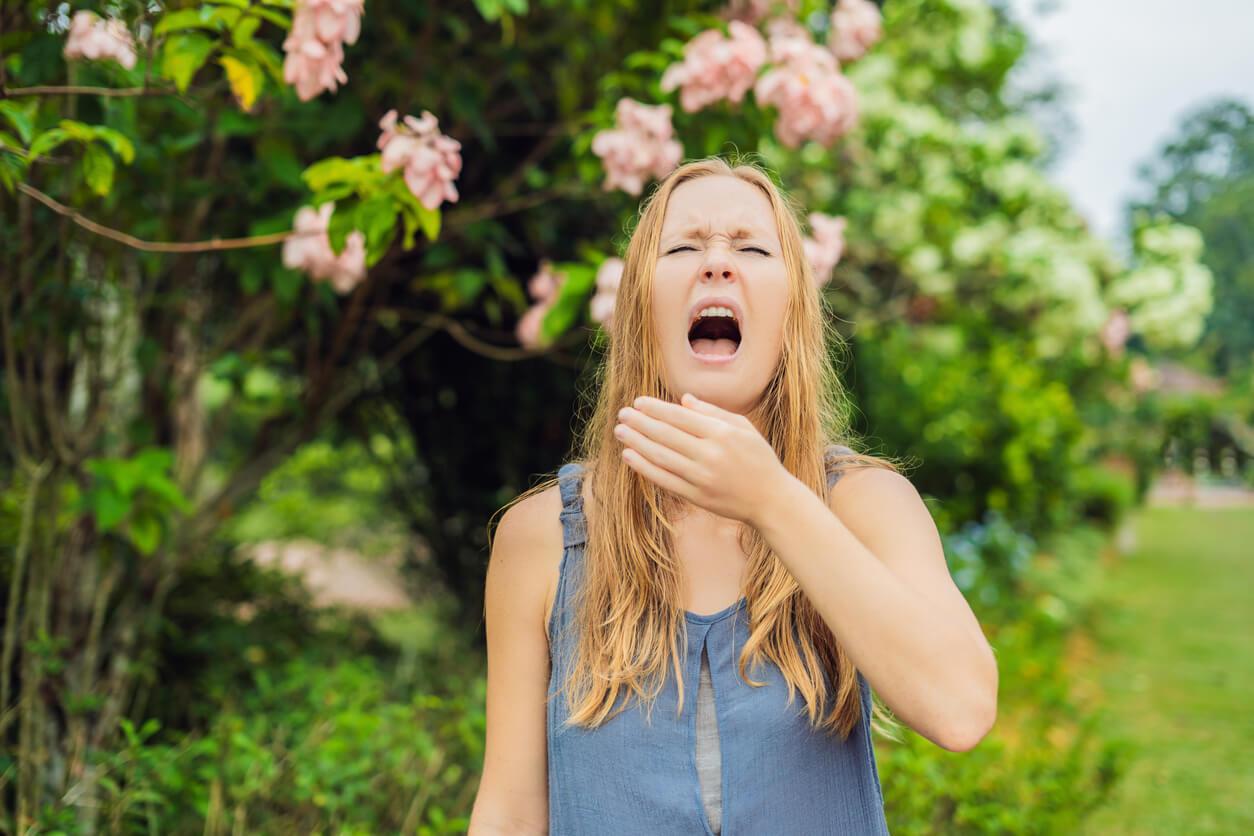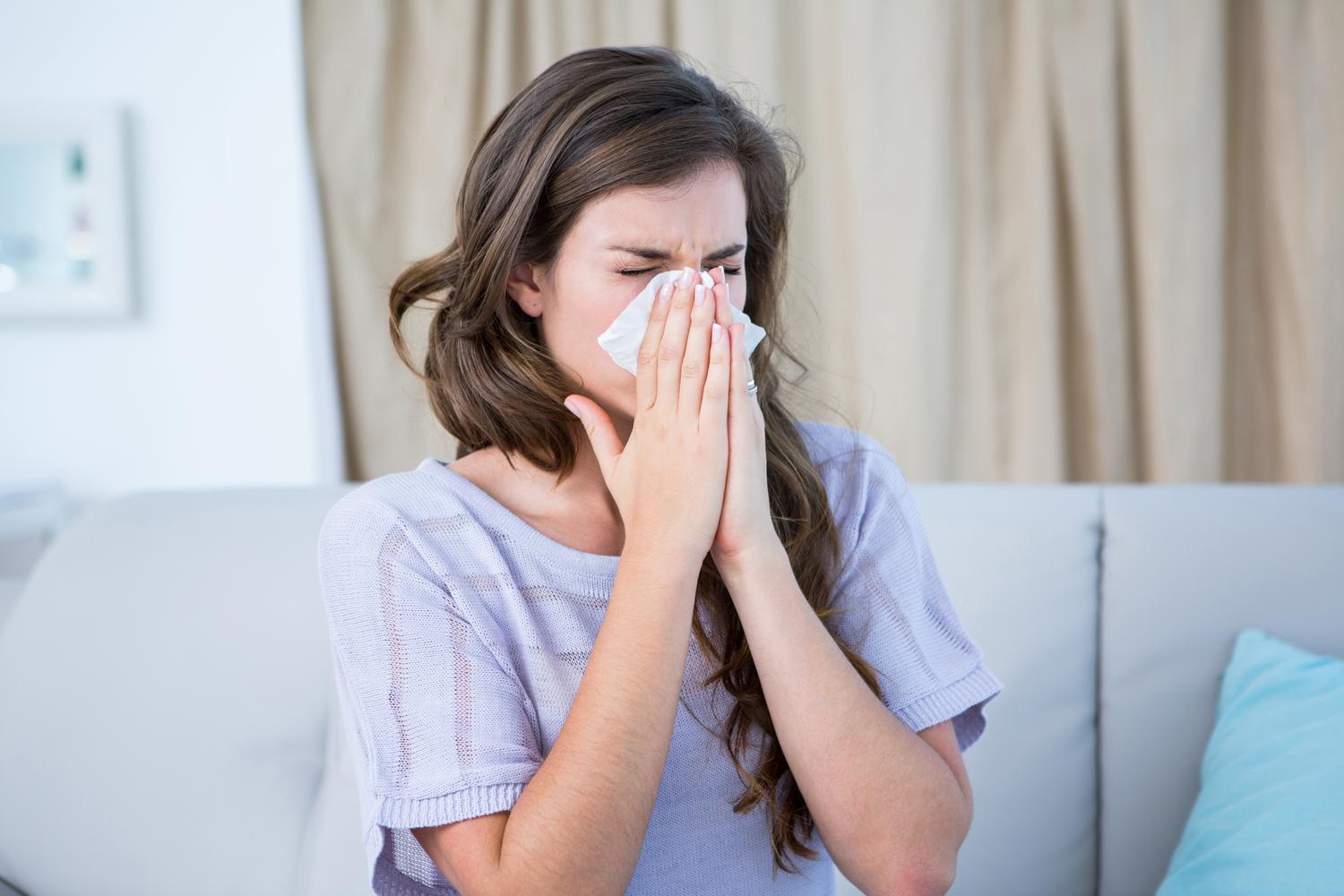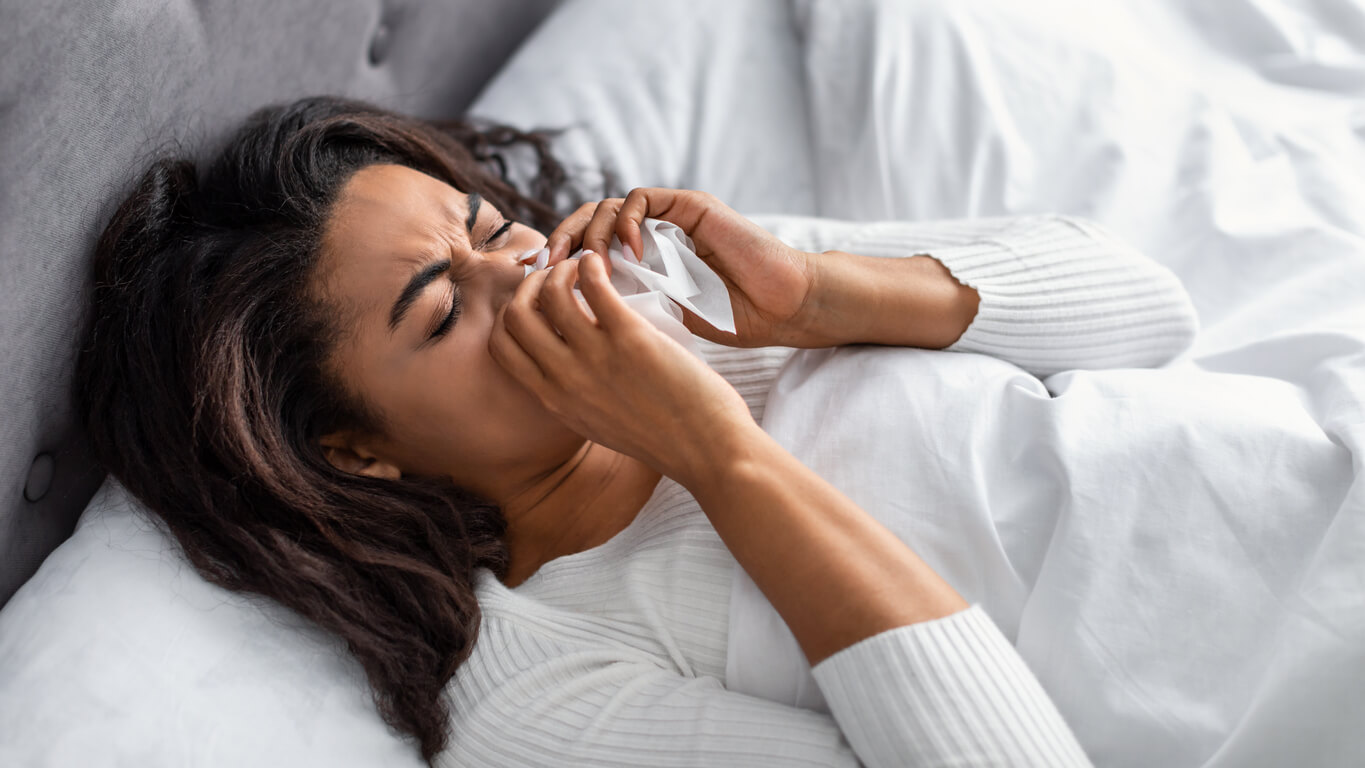Ragweed Allergies: Symptoms and Treatment Options
Key Takeaways
- Ragweed pollen levels are highest from August to October and can trigger sneezing, nasal congestion, itchy eyes and other allergy symptoms
- Allergy treatments for ragweed range from antihistamines and nasal sprays to long-term options like immunotherapy
- You can limit your exposure to pollen by keeping windows closed, showering after being outdoors, and checking local pollen counts
If you're dealing with sneezing, a runny nose, itchy eyes, or congestion in late summer or early fall, ragweed pollen may be the cause. Ragweed is a flowering plant found across North America and is one of the main triggers of seasonal allergies during this time of year. Nearly 50 million Americans are affected by ragweed allergy symptoms, which can range from mild to severe and often last for weeks.
Read on to learn what ragweed allergy symptoms look like, why they happen, and what treatment options are available to help you manage them.
About ragweed
There are over 17 different species of ragweed. While ragweed can grow nearly anywhere, it is often found in grassy areas and open spaces with plenty of sunlight.
A ragweed allergy is a misnomer; it's actually ragweed flower pollen that causes an allergic reaction. Unfortunately for those with ragweed pollen allergies, one ragweed plant can produce up to 1 billion pollen grains. Warm weather, humidity, and breezes all help release ragweed pollen.
The Asthma and Allergy Foundation of America (AAFA) suggests that ragweed pollen can be up to seven times higher in urban areas, where temperatures are over 3 degrees warmer than surrounding rural areas. Because of this, pollen counts are often higher in downtown areas than in parks or less-developed regions.
Ragweed season begins in late July and will continue through mid-September or October as the plant starts to flower. The wind picks up and carries the pollen grains produced during this time hundreds of miles. This is how the plant reproduces and why you have difficulty breathing in the fall.
Allergic reactions to ragweed
Ragweed allergic reactions happen when your body perceives ragweed pollen as a potential threats. In response, your immune system releases a chemical known as histamine. Histamines are meant to help fight infection and disease, but they also cause an inflammatory response that leads to bothersome symptoms like itchy eyes, a runny or itchy nose, and a scratchy throat.
Common symptoms of an allergic reaction to ragweed include:
- Itchy, red, irritated, and watery eyes
- Sneezing
- Runny nose
- Nasal congestion (a stuffy nose)
- Post-nasal drip
- Itchy throat
- Chronic cough
- Headaches
These symptoms can vary in severity from person to person. For those with asthma, a ragweed allergy can exacerbate asthma symptoms such as coughing, wheezing, and shortness of breath.
Oral allergy syndrome
As if the discomfort of allergy symptoms weren’t enough, people with a ragweed allergy may experience additional symptoms caused by oral allergy syndrome (OAS) or pollen food allergy syndrome (PFAS).
Oral allergy syndrome is a condition in which individuals who are allergic to certain pollens, particularly ragweed pollen, may experience allergic reactions when they consume certain fresh fruits, vegetables, or nuts. Ragweed allergies play a significant role in oral allergy syndrome because the proteins found in ragweed pollen are structurally similar to proteins found in these foods.
When individuals with ragweed allergies eat raw or uncooked fruits, vegetables, or nuts that contain similar proteins, their immune system can mistake them for ragweed pollen and trigger allergic symptoms. Cooking or processing the foods involved often eliminates the allergenic proteins, allowing individuals with oral allergy syndrome to enjoy these foods without adverse reactions.
Ragweed-associated OAS symptoms commonly result from eating foods like:
- Banana
- Chamomile
- Kiwi
- Peach
- Peppers
- Fennel
- Celery
- Carrot
- Melons (cantaloupe, watermelon, and honeydew)
- Cucumber
- White potato
- Zucchini
- Sunflower seeds
Ragweed allergy treatment options
There are two main approaches to treating ragweed allergies: relieving symptoms and addressing the immune system’s response to ragweed.
Symptom-relief options include antihistamines, decongestants, and corticosteroids. These help ease issues like sneezing, congestion, and itchy eyes. Immunotherapy, on the other hand, works to change how your immune system reacts to ragweed over time. Here's a closer look at each of these treatment options:
Antihistamines
Antihistamine medications work by stopping the release of histamines in your body, which helps prevent allergy symptoms.
You can find many of these drugs without a prescription at most pharmacies. They come in various forms, like pills, capsules, chewable tablets, liquids, nasal sprays, or eye drops. If your symptoms are severe, your healthcare provider can prescribe stronger antihistamines.
OTC antihistamines include:
- Cetirizine (generic for Zyrtec)
- Fexofenadine (generic for Allegra)
- Loratadine (generic for Claritin)
- Diphenhydramine (generic for Benadryl)
- Brompheniramine (generic for Dimetane)
- Chlorpheniramine (generic for Chlor-Trimeton)
- Clemastine (generic for Dayhist)
- Doxylamine (generic for Vicks NyQuil)
- Azelastine
Decongestants
Decongestants are fast-acting aids for a stuffy and runny nose. These drugs are meant for short-term use only. They reduce swelling in your nose so that you can breathe more easily.
You can get decongestants as an oral pill or a nasal spray. You'll find them in both over-the-counter and prescription forms. Some medicines have antihistamines and decongestants to quickly relieve your symptoms and minimize the allergic reaction. Those with underlying heart disease or hypertension should use caution with decongestants or avoid them completely.
Oral medications containing a decongestant and antihistamine include:
- Desloratadine and pseudoephedrine (Clarinex-D)
- Loratadine and pseudoephedrine (Claritin-D)
- Cetirizine and pseudoephedrine (Zyrtec-D)
- Fexofenadine and pseudoephedrine (Allegra-D)
Decongestant nasal sprays include:
- Oxymetazoline (Afrin)
- Tetrahydrozoline (Tyzine)--also available as eye drops
Corticosteroid sprays
Nasal sprays containing corticosteroids are excellent treatment options for people with chronic allergy issues. They might not work right away—it can take a few weeks—but they're the best choice for long-term symptom management. These drugs are thought to help stop histamines from causing allergies before they even start.
OTC steroid nasal sprays include:
- Mometasone (Nasonex)
- Budesonide (Rhinocort)
- Triamcinolone (Nasacort)
- Fluticasone (Flovent)
Immunotherapy
For those managing severe symptoms or chronic allergies, immunotherapy can provide long-term immunity against allergens.
Sublingual immunotherapy (SLIT) for allergies is a treatment method that helps individuals reduce reactivity tobuild immunity against specific allergens, such as pollen or dust mites. Unlike traditional allergy shots, SLIT involves placing a small amount of allergen extract under the tongue, where it is absorbed into the bloodstream.
Over time, regular exposure to these small doses helps the body become less sensitive to the allergens, reducing allergic reactions and symptoms like sneezing, itching, and congestion. It's a convenient and non-invasive approach that can be administered at home under medical supervision, making it a popular choice for managing allergies in a safe and effective manner.
Preventing ragweed allergy symptoms
In addition to medicated treatment plans, you can use simple at-home strategies to minimize your exposure to pollen.
Preventative methods include:
- Keep windows and doors closed during peak ragweed season (usually late summer to early fall) to minimize pollen entering your home.
- Use high-efficiency particulate air (HEPA) filters to trap pollen and other allergens in your home's HVAC system.
- Regularly clean and vacuum your home using a vacuum cleaner equipped with a HEPA filter to remove pollen and dust.
- Regularly wash your bedding, curtains, and pillowcases in hot water to reduce allergen buildup.
- Consider using allergen-proof pillow and mattress covers to prevent dust mites and pollen from accumulating.
- Shower and change your clothes after spending time outdoors to remove pollen from your body and clothing.
- Dry your laundry in a dryer rather than hanging it outside to prevent pollen from sticking to your clothes.
- Monitor local pollen forecasts and try to stay indoors on high pollen count days, especially during peak ragweed season.
- Use a saline nasal rinse to flush out allergens from your nasal passages.
While there is no cure for a ragweed allergy, these preventive and medicated relief options can help ease your symptoms.
Ragweed allergy diagnosis
Diagnosing a ragweed allergy involves a combination of a medical history assessment, physical examination, and specific allergy testing.
First, a health care provider will discuss the patient's symptoms, including the timing and severity of their allergic reactions, to determine if they align with ragweed pollen exposure. Your provider may also refer you to an allergist for allergy testing.
Allergy testing is a crucial step in confirming a ragweed allergy. Skin prick tests or blood tests (specifically IgE antibody tests) can identify whether your immune system produces antibodies in response to ragweed allergens. In a skin prick test, a tiny amount of ragweed extract is applied to the skin, and if a raised, itchy bump develops, it indicates an allergic reaction.
On the other hand, blood tests measure the presence of specific IgE antibodies against ragweed allergens in the bloodstream.
Once a ragweed allergy is diagnosed, your healthcare provider can work with you to develop a tailored management plan. This may include allergen avoidance strategies, medications, and allergy immunotherapy (allergy shots) for long-term symptom control.
How Sesame can help
If you’re struggling with ragweed allergies or other seasonal allergy symptoms, a licensed provider on Sesame can help. Simply book an online allergy consult to discuss your symptoms and get expert guidance on next steps.
Sesame also offers online allergy testing and referral services to help identify the allergens triggering your symptoms. Based on your consultation, your provider may recommend treatment options and prescribe medication if appropriate. This could include sublingual immunotherapy (SLIT), depending on your specific needs.
Please note that all treatments and prescriptions are determined at the discretion of your healthcare provider.

